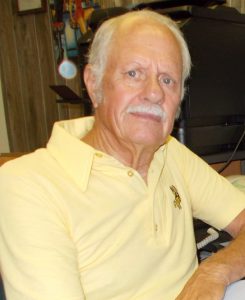
Please tell us a little about Heavy Carbon Co.
The company began in 1995 as an idea for carburizing steel at a cleaner, faster rate of carbon penetration through a steel surface. This discovery was found many years earlier while building an experimental rotary retort furnace for General Motors. The mechanics of that furnace failed, but the atmosphere system for it was and still is successful, because while using a low flow of atmosphere with a high carbon potential, this atmosphere will penetrate a dense load of parts with a high carbon content without soot formation.
What is Heavy Carbon Co.’s Endocarb system?
In 1997, the Euclid Heat Treating Co. (EHT) was interested in a faster, cleaner atmosphere system and invited me to test out the Endocarb system at their plant. EHT has been helpful during the 15 years of testing. Using the same idea of creating an atmosphere in a rotary retort, the Endocarb unit with a retort is heated to a high temperature to crack an air/gas mixture before entry into the furnace. The high temperature used to crack the air/gas mixture is not lost because it is not cooled down as in a typical endogas operation with an endo generator. The temperature inside the Endocarb retort is always at 1825°F while an atmosphere reaction in a furnace may take place at a temperature as low as 1500°F. The higher reaction temperature will create a cleaner, more penetrating atmosphere. This is a big advantage for carburizing at a low temperature.
How would manufacturers benefit from the Endocarb system?
Unlike an endo generator, the Endocarb unit can be easily started and stopped at any time. There is almost no maintenance of this system with a long life expectancy, and the shorter carburizing cycles will use less power and gas.
The Endocarb system is crucial for the carburizing of large gears that require an effective case depth (ECD) over 0.l000 inch. At 0.1000-inch ECD and deeper, the carburizing time can be reduced by about seven hours a day without downtime for soot removal while improving the quality of the part. The deeper the case required, the bigger the savings. Carburizing time reduction starts at about 0.040 inch, but the Endocarb system improves other types of atmosphere heat treating as well.
How does the Endocarb system reduce carburizing time?
The furnace must remain clean with an atmosphere that will remain reactive. Too much carbon will cause soot to form and interfere with the reaction. By cracking the atmosphere in a retort at a high temperature before entering the furnace makes it is easy to control the carbon potential, dew point, and CH4. The Endocarb system is used to create this carburizing atmosphere. By using only a hydrocarbon gas and air in the Endocarb retort, it is possible to carburize with a carbon potential (CP) that is well into the soot range. Carbon control is a key factor for quality atmosphere. This atmosphere is different than using endogas from an outside endo generator as in standard carburizing. Standard carburizing will crack the atmosphere inside the furnace with a temperature that is normally lower than the 1825°F in the Endocarb retort. And as the CP rises in excess, air is entered to bring it down. The Endocarb unit creates its own carburizing atmosphere and controls it by changing the air/gas ratio that enters the retort. The only gas used in the Endocarb unit is what is needed to hold the CP as programmed — never too much. This saves gas.
Cracking the atmosphere in the retort and controlling the CP before entry into the furnace enables a higher CP use. The higher CP will create a higher rate of penetration into the steel surface. Thus, an ECD is reached up to about 30 percent faster. This means that less gas and power is used because less time is needed to reach the ECD. Using a boost/diffuse system also eliminates the need for a soot burnout every week. This boost/diffuse system is unique in that it is programmed to operate in half-hour increments with about two-thirds of that time in boost at a high CP and one-third in diffuse at a lower CP. The furnace is continuously purged of soot while maintaining a high CP in the load.
How is the burner tube protected against burnout or meltdown?
A silicon carbide burner tube was installed in the Endocarb system. This allows for a higher operating temperature without fear of failure. Concern of losing the catalytic affect of the nickel in the alloy burner tube was overcome by installing small alloy rods with a high nickel content in the atmosphere area. This was easy to do, and it is easy to replace them if needed. It takes about one minute to replace one even at high temperatures. This idea could be used in a furnace if more catalytic action is needed.
To take advantage of the benefits of using this system, how would you approach a furnace manufacturer?
This system can be installed in most any carburizing furnace. A furnace manufacturer will not offer this system because it is not their equipment, but any furnace company is capable of installing it while building a new furnace if requested. The Endocarb system can make their furnace more productive, save time and money, and provide a short return on investment.
FOR MORE INFORMATION and to watch a video of the Endocarb system, go to www.heavycarbon.com.
























